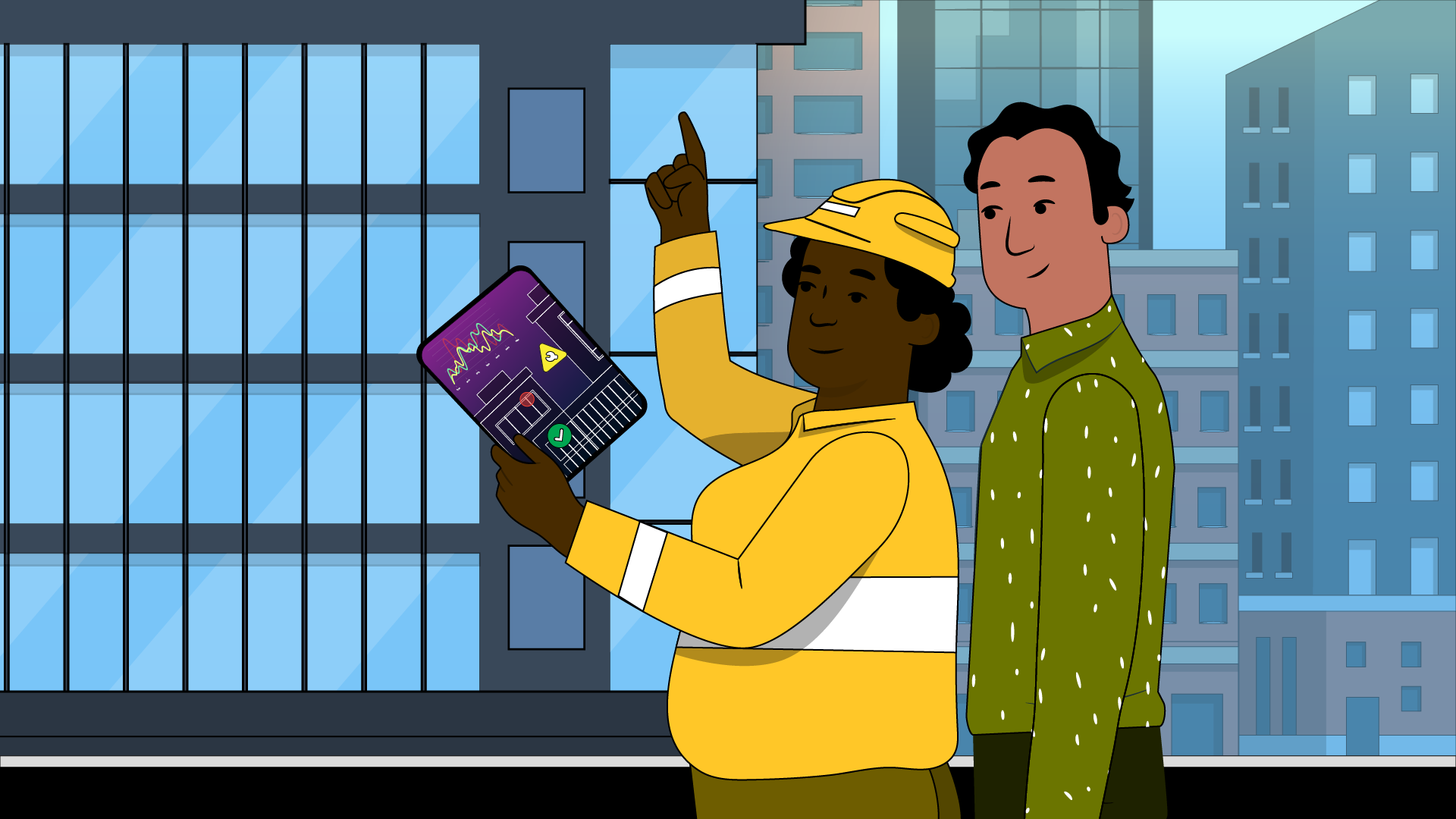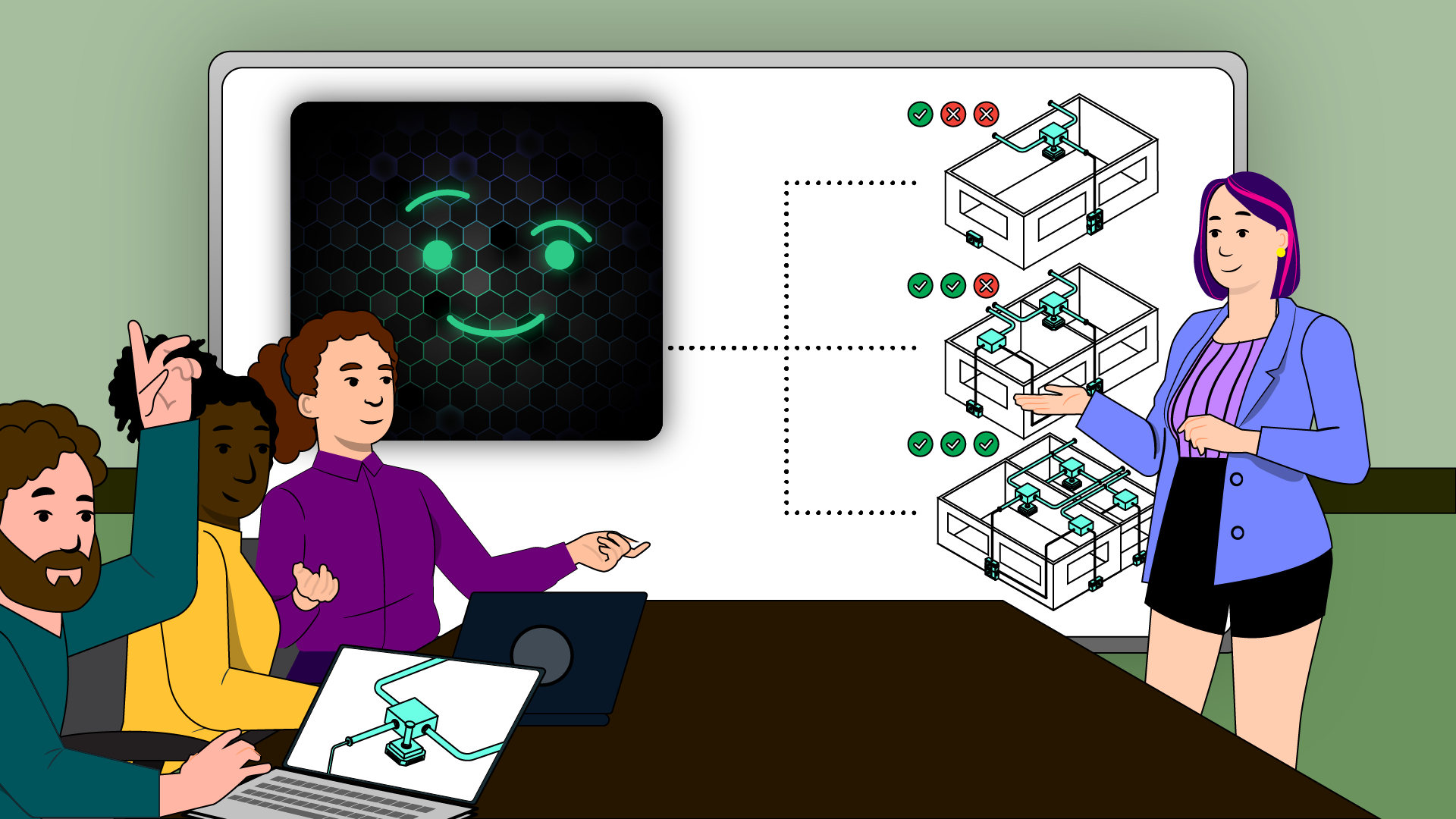& Construction

Integrated BIM tools, including Revit, AutoCAD, and Civil 3D
& Manufacturing

Professional CAD/CAM tools built on Inventor and AutoCAD
In July 2023, Earth broke or tied its hottest day on record for four straight days. As extreme heat becomes more frequent across the globe, threats to human health and agriculture increase, along with the risk of devastating wildfires and droughts. This correlates to increased energy usage as the demand for effective cooling becomes a necessity—which leads in turn to more greenhouse gas (GHG) emissions and ecological harm.
Many countries are getting on board to help mitigate GHG emissions and the effects of climate change. More than 85,000 people attended COP28—the UN’s annual climate change conference—at the tail end of 2023. The event launched the Global Cooling Pledge: 66 countries committing to forge a path toward cutting cooling emissions worldwide. Projected 2050 cooling emissions could be reduced by a whopping 3.8 tons of CO2 equivalent if the recommendations in the pledge are fully realized.
This commitment calls for innovative solutions, and spotlights areas that need improvement, like inefficient cooling systems. HVAC executives worldwide are under pressure to cut their organizations’ carbon footprints and increase their systems’ efficiency and sustainability. A practical application of the world’s new favorite technology—AI—just might be the answer.
Current HVAC systems are contributing to the problem. “Inefficient HVAC systems consume excessive energy, often derived from fossil fuels, to heat, cool, and ventilate assets, contributing to 4% of greenhouse gas emissions globally,” says Mateusz Lukasiewicz, digital projects manager of KEO International Consultants, a firm specializing in the delivery of planning, architecture, engineering, sustainability, project and construction management, and digital advisory services. “The increased resource usage results in higher emissions of carbon dioxide, methane, chlorofluorocarbons, and other greenhouse gases, intensifying climate change and environmental degradation.”
Kent Peterson, COO and vice president of P2S, a consulting engineering, commissioning, and construction management firm, agrees that inefficient commercial HVAC systems are a problem. “[They] can significantly increase utility costs due to their higher energy consumption. These systems may not optimally control the temperature and airflow, leading to excessive energy use.”
AI in HVAC is already shaping the future of building efficiency, and building managers play a pivotal role in exploring these new technologies. “Our team recognizes the substantial impact HVAC systems have on building emissions and energy costs, which is heightened by the escalating demands for energy-efficient and sustainable operations in commercial buildings,” says James Wilton, director of Absolute Climate Solutions, an HVAC services company based in the UK. “Building managers play a crucial role in this regard, as they are often on the front lines of applying new technologies to enhance system performance.”
As building managers implement new technologies for enhanced HVAC system performance, integrating AI and machine learning is a promising avenue for optimizing building operations and addressing sustainability concerns.
“With AI and machine learning, facility managers can have a copilot that can automatically evaluate large HVAC system data sets, identify opportunities for optimizations, and automatically adjust operating parameters—set points, system settings—to improve how the building performs overall, all without impacting occupant comfort,” says Eugene Mazo, chief of staff at Intelligent Spaces Group, an Acuity Brands business segment providing solutions that make buildings smarter, safer, and greener. “We are already seeing AI and machine learning usher in the next generation of fault detection and diagnostics that help facility teams identify issues faster, helping them mitigate expensive, inefficient operations across their portfolio of buildings.”
AI technologies offer the flexibility, sensitivity, and intelligence needed to manage HVAC/building performance as conditions change. According to Lukasiewicz, a digital twin is one example of how AI can be used for HVAC systems. “Digital twin technology provides virtual replicas of physical HVAC systems, powered by AI, allowing engineers and asset owners to simulate various operating scenarios and assess the impact of potential changes or upgrades.”
AI and machine learning offer various ways to optimize HVAC systems, including:
1. Predictive maintenance: By analyzing data from HVAC sensors and systems, AI can predict potential failures or inefficiencies before they occur. “AI and digital twin technology are revolutionizing HVAC efficiency by proactively monitoring systems through IoT sensors for anomalies, predicting maintenance needs, and optimizing performance,” Lukasiewicz says. This proactive maintenance helps reduce downtime and prevents costly repairs.
2. Optimized control strategies: Machine learning algorithms can continuously analyze building occupancy, weather forecasts, and other factors to adjust HVAC settings in real time. “AI can help predict and control HVAC operations based on real-time data, environmental conditions, and usage patterns, leading to more efficient energy use,” Peterson says. “Digital twins create virtual models of the physical HVAC systems, allowing simulations and analyses to improve energy efficiency and system performance without direct physical alterations.” This dynamic adjustment ensures optimal comfort while minimizing energy consumption.
3. Fault detection and diagnostics: AI algorithms can detect anomalies in HVAC system performance by comparing real-time data to expected patterns. This early detection helps identify faults, leaks, or malfunctions, allowing for timely repairs and improved system efficiency.
4. Energy use optimization: Machine learning algorithms can optimize HVAC system operation to minimize energy consumption while maintaining comfort levels. This optimization may involve scheduling equipment usage, adjusting set points based on occupancy patterns, or integrating with renewable energy sources.
5. Dynamic load balancing: AI can optimize HVAC system operation by dynamically redistributing heating or cooling loads across different zones within a building. This load balancing ensures efficient use of resources and prevents overworking specific cooling system components.
In realizing the full potential of HVAC optimization, building managers, armed with insights from building data analysis, are positioned to lead the charge toward energy-efficient and sustainable building operations. Tools like Autodesk Forma, which has rapid operational energy analysis and microclimate analysis, can help designers and engineers make informed decisions early in the design process, promoting energy-efficient architecture and optimal comfort.
“As P2S looks to the future, AI could be integral in designing energy-efficient buildings by simulating various scenarios and managing systems in real time for optimal performance,” Peterson says. “Digital twins may be used extensively in lifecycle management, from construction to building operation, facilitating ongoing energy-efficiency improvements and reducing the environmental impact.”
Lukasiewicz agrees. “AI and digital twin technology will play a key role in the future of sustainable construction, facilitating design optimization, resource management, enhancing health and safety during construction, and enabling automated responsiveness to changing conditions during operations. This will reduce energy consumption, material waste, and greenhouse gas emissions while extending asset lifespans and reducing total cost of ownership.”
Collaboration with policymakers and technology innovators will be paramount in shaping a future where AI and machine learning seamlessly integrate with HVAC systems and in ensuring widespread adoption of these technologies to create a cooler, greener world.
Jon Holmes is a content marketing specialist at Autodesk, focusing on SEO and owned media. Based in Metro Detroit, he is a copywriter by trade, a poet-philosopher at heart, and an all-around creative in spirit. Pithy, punchy, and persuasive are his specialties. Before joining Autodesk, Jon drove engagement and conversions for digital mortgage companies, AI start-ups, SAAS manufacturing apps, and more. He’s a lover of morning meditation, lion’s mane mushrooms, and long-distance jump shots.
POV
AECO
Courtesy of Royal BAM Group.
AECO







